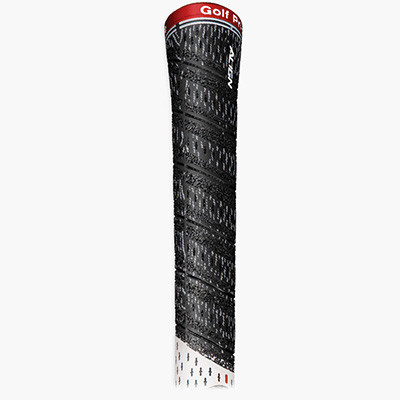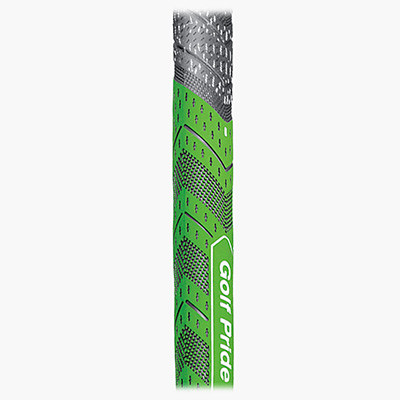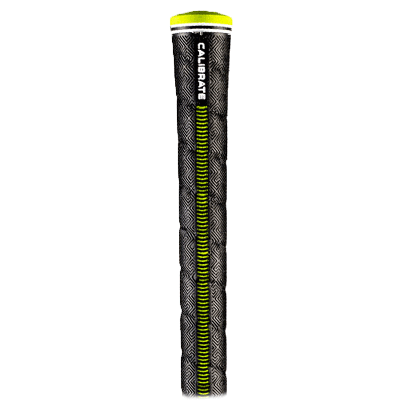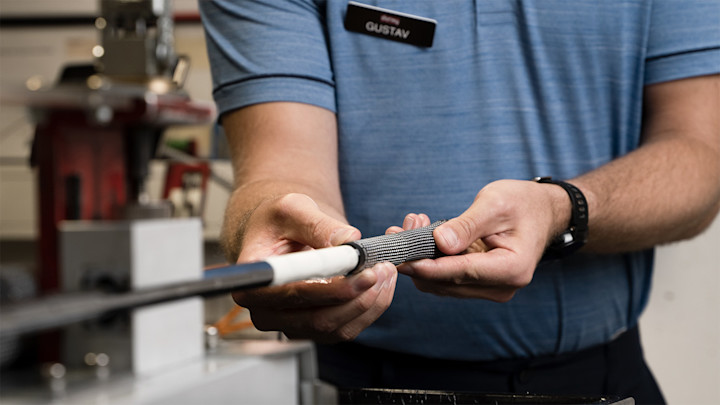Grip guide - Which grip should I have?
At first glance, the club’s grip may seem simple and uncomplicated. But what do cord, ribbed and multicompound actually mean – and which thickness best suits your hands? In this guide, we get to grips with grips and explain the terms, sizes and materials.
What fits me?
Finding the right size can actually help you shape your shot. Even if what feels right is very individual, there are a few guidelines you can keep in the back of your mind depending on which glove size you use. Things to bear in mind:
✔️ Ladies’ gloves: Lady- or undersize grips
✔️ Men’s Small: Standard grips
✔️ Men’s Medium: Standard or midsize grips
✔️ Men’s Medium to XL: Midsize grip
✔️ Men’s XXL: Jumbo grips
Thin grip – advantages: With a slightly thinner grip it can be easier to rotate the lower hand during the swing to prevent a slice. On the other hand, if the grip is too thin, it’s easy to rotate too much and hit a hook/pull instead.
Thick grip – advantages: A thicker grip ensures your wrists have a more stable position throughout your swing – which is a good thing if you have a hook problem or often hit to the left (as a right-hander). Many people also find that a thicker grip is more comfortable to play with than a thinner one.
Plus4 – a modern classic In former years it was common practice to apply a few layers of tape around the bottom part of the grip, to “build up” the thickness and achieve an even-thickness grip. Now there are ready-made grips available that are already built this way, known as Plus4.undefined
Soft or hard grip? As if it were not enough to have to take into account properties and impressions when choosing a grip, there are also softer and harder versions to choose from. A softer grip can feel a bit sticky and provide good grip and comfort for the average golfer and players with slow swing speeds. A harder grip on the other hand is better suited to more advanced players who hit the ball hard, as it holds up better against twisting and greater stresses.
Models and materials
As with all golfing equipment, grips are developing at a rapid rate, while players are becoming ever more aware of what they’re playing with. There is so much to choose from today, whether you want a soft and slightly tacky grip or prefer something harder. And everything in between of course. Here are some of the most common models and terms that can be useful to know.

CORD
To achieve a harder feel in the grip, the manufacturers bind thin cord into the rubber. Cord is also effective in damp conditions – and is often favoured by the world’s best players.

MULTICOMPOUND
Multimaterial grips have become incredibly popular in recent years with harder rubber at the top and softer rubber at the bottom, to create optimal grip for both hands.

RIBBED / ALIGN
The grip has a slight ridge down the back which helps you get your hands into a consistent position for every shot. The grip feels slightly more oval underneath than round.
Take care of your grips
By checking your grips regularly, you can easily see if they’re starting to wear and if they need changing. For example, they might start looking shiny where you usually place your hands, the lower edge might start drying out/cracking or the bond has started to go in the rubber. For most people, investing in new grips every two years is about right.
To prolong the life of your grips, you should clean them regularly with a sponge or cloth, warm water and some washing up liquid. It’s also a good idea to store the clubs in a cool place and not, for example, in a hot car for long periods of time, as the rubber dries out and ages faster in heat.
Grips are in fact the only part of the golf club you have contact with when you swing, so if you give a little love and attention to keeping your grips in good condition you’ll give yourself the best chance of shooting a great score on your next round.
